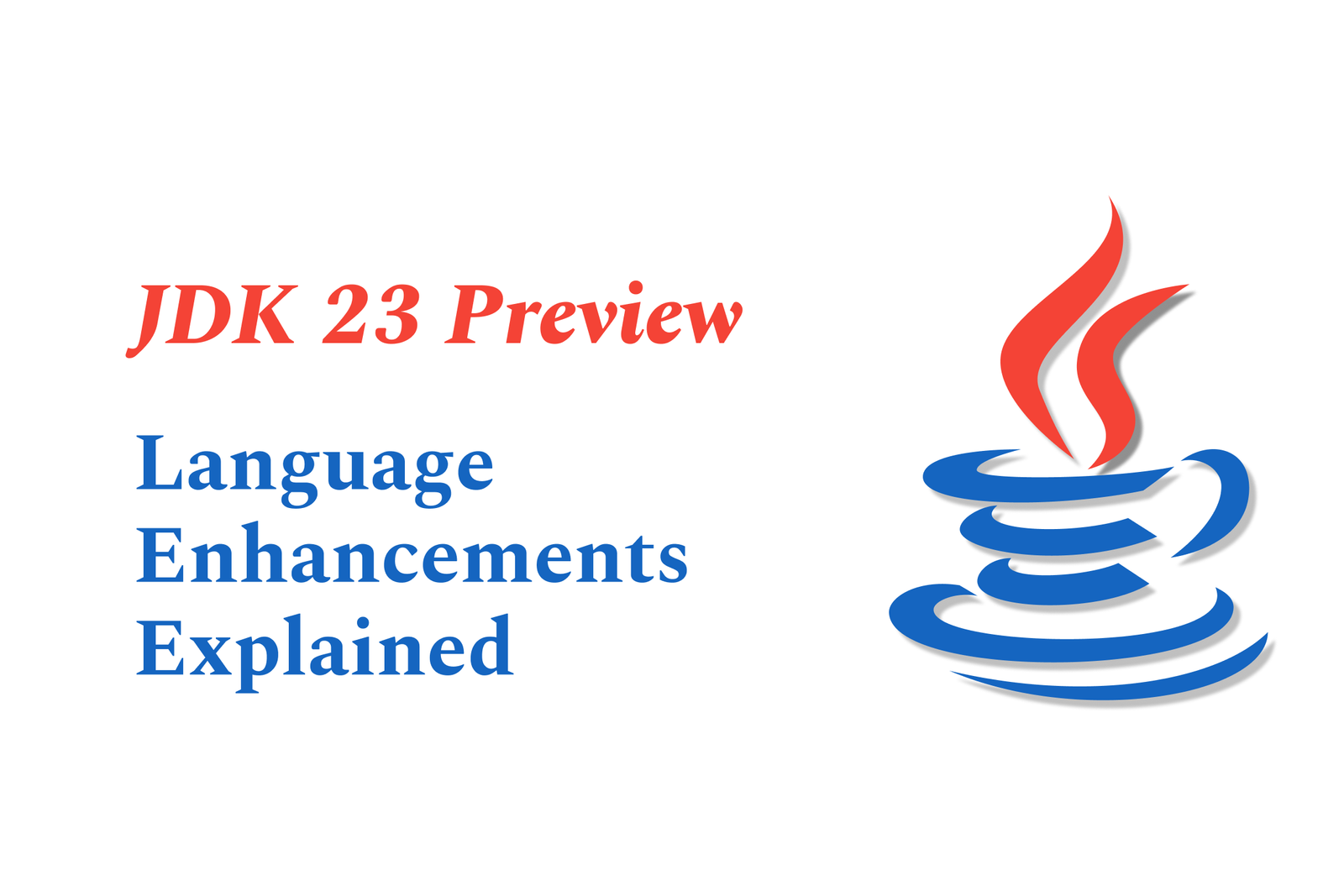JDK 23 preview: language enhancements explained
JDK 23 Preview introduces key language enhancements like module import declarations, structured concurrency, scoped values, and a new class-file API, improving modularity, concurrency management, and bytecode handling, all designed to boost developer productivity and code safety.
JDK 23 Preview: Language Enhancements Explained
1 ) Introduction to JDK 23
Java Development Kit (JDK) 23 is the latest update to the Java platform and is now generally available. It introduces several significant new features and previews aimed at improving language capabilities, modularity, and concurrency while enhancing developer productivity and code safety.
2 ) Key Language Enhancements in JDK 23 Preview
Module Import Declarations (Preview):
Introduces a more concise and flexible way to import modules in Java applications, streamlining module usage and improving modular programming experience.
Stream Gatherers (Preview):
Enhances the Java Stream API by adding gatherers, which improve how streams are collected and processed, allowing more efficient and readable stream operations.
Structured Concurrency (Preview):
Provides a simplified concurrency model that treats multiple tasks running in parallel as a single unit of work. This model improves error handling, cancellation, and result aggregation, making concurrent programming safer and easier to manage.
Scoped Values (Preview):
Adds a mechanism to share immutable data within and across threads in a structured and safe manner, facilitating cleaner context passing compared to traditional thread local variables.
Class File API:
JDK 23 introduces a new class file API that allows Java developers to read, write, and transform Java class files pragmatically. This API aids tools and frameworks in generating or manipulating bytecode with greater ease and reliability.
3 ) Additional Language Improvements and Preview Features
JDK 23 continues the evolution of Java's type system and language features, including improvements in pattern matching, record classes, sealed classes, and string templates — some introduced in previous versions but further refined here.
4 ) Preview and Experimental Status
Several features in JDK 23 are provided as previews, meaning they are fully specified and implemented but not final. These features require explicit enabling and will evolve based on feedback before becoming permanent parts of the language in future releases.
5 ) Summary
JDK 23 preview features focus on modernizing Java's approach to modules, concurrency, data sharing, and class file manipulation. These enhancements aim to simplify programming models, improve performance, and maintain Java's reputation as a robust, scalable language for enterprise and modern application development. Developers are encouraged to experiment with these features to provide feedback that will shape their final form.
This summary highlights the major language enhancements and architectural improvements previewed in JDK 23 to help developers familiarize themselves with the upcoming capabilities in the Java ecosystem.
https://justacademy.in/news-detail/flutter-sdk-updates-in-july-2025
https://justacademy.in/news-detail/top-flutter-job-roles-hiring-now
https://justacademy.in/news-detail/react-native?s-new-push-notification-features-you-must-try
https://justacademy.in/news-detail/android-vr-and-ar-support-news
https://justacademy.in/news-detail/flutter-forward-2025-recap
Related Posts
In 2025, top Angular libraries offer modern, feature-rich components and tools for building dynamic web apps. From powerful data grids to low-code platforms like UI Bakery, these libraries enhance development speed, UI design, and scalability, making them essential for Angular developers.
Migrating from AngularJS to Angular 17 involves gradually upgrading your app by running both frameworks together using tools like ngUpgrade, rewriting components in TypeScript, and adopting Angular’s modern architecture to enhance performance, maintainability, and long-term support.
Angular state management tools help organize and handle app data efficiently, improving scalability and maintainability. Popular options include NgRx for robust, RxJS-based patterns, and newer Signal Store solutions that offer simpler, reactive approaches integrated tightly with Angular’s latest features.
RxJS in Angular empowers developers to manage asynchronous data streams with powerful operators like `forkJoin`, `combineLatest`, and `zip`. Mastering these key operators in 2025 is essential for building efficient, reactive applications that handle complex event sequences seamlessly.
Angular performance optimization in 2025 focuses on improving app speed and responsiveness by using techniques like OnPush change detection, lazy loading, efficient data caching, and AOT compilation. These practices reduce load times, enhance user experience, and ensure scalable, fast Angular applications.
In 2025, Angular remains preferred for large-scale, enterprise apps with its robust, all-in-one framework, while Vue attracts developers seeking simplicity and fast development for smaller projects. Both frameworks excel, with choice driven by project needs and team expertise.
Angular Signals are a new reactive primitive in Angular 16 that enable fine-grained, efficient change detection by automatically tracking dependencies and updating only affected parts of the UI. They simplify state management and boost app performance, revolutionizing Angular's reactivity model.
Angular interview questions to prepare in 2025 focus on core concepts like components, directives, data binding, routing, and dependency injection, along with TypeScript mastery and latest Angular features to ensure strong practical knowledge for building scalable, efficient web applications.
AngularJS reached its official end of support in January 2022, meaning no further updates or security patches. To ensure app security and performance, developers should consider migrating to modern Angular versions or seek third-party long-term support options if immediate migration isn’t possible.
The Angular Roadmap 2025 highlights upcoming features focused on improving developer experience and performance, including zoneless Angular, Signals integration, enhanced Forms, async data handling, improved HMR, and expanded Angular Material/CDK enhancements, driving modern, efficient web app development.










